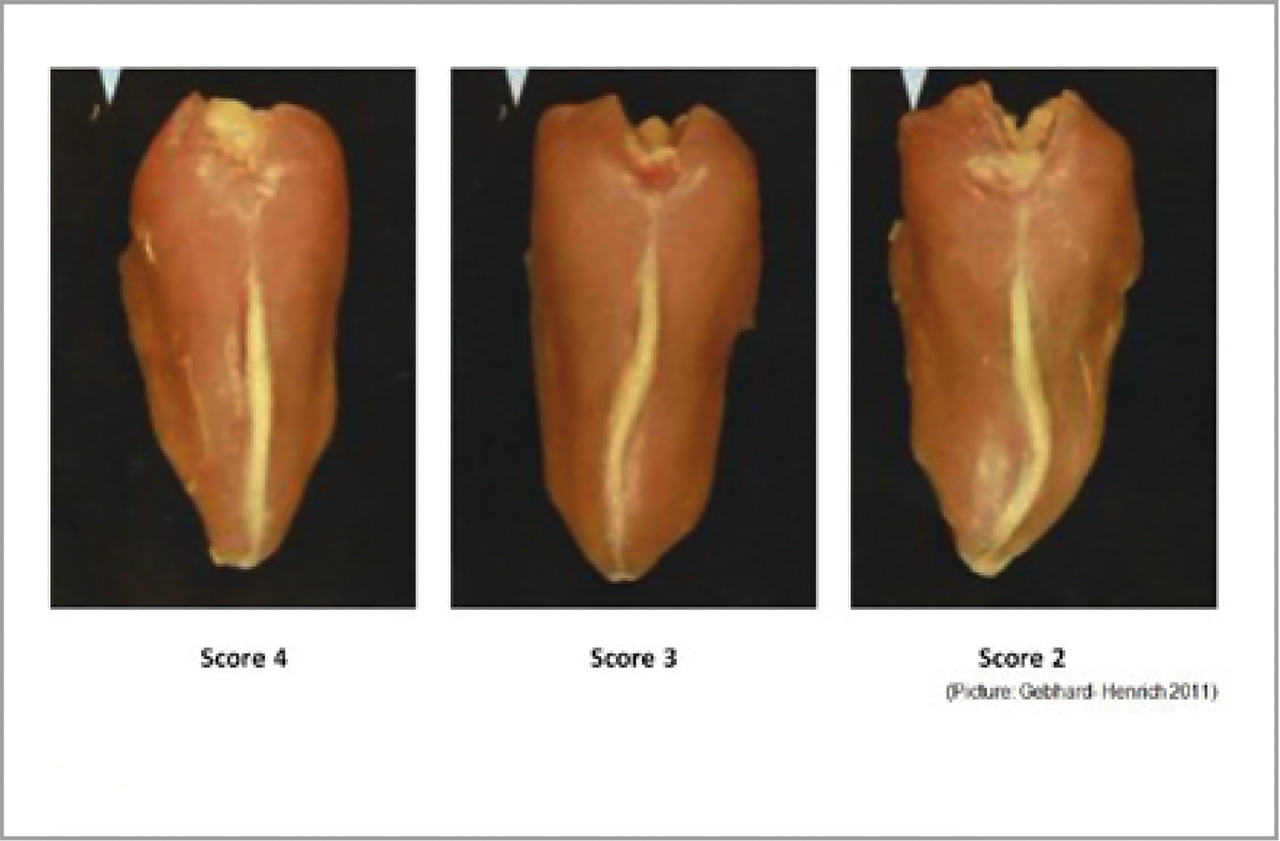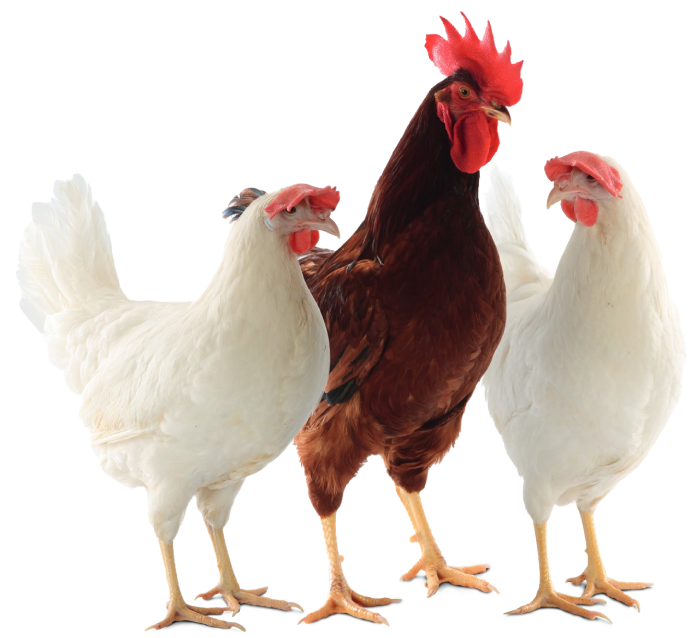The laying hen as a bird has some specific differences compared to mammals. Besides the obvious characteristics of feathers and the ability to lay eggs, a major difference is the totally different bone system. In addition to pneumatic bones for the reduction of bodyweight to enable flight, the bird has the peculiarity of a medullary bone system. The medullary bone system allows the bird to store calcium in the bones and mobilise the calcium later for eggshell formation.
As the age of the hen increases, the capacity to store calcium in the medullary bone system declines. As a result, calcium is increasingly resorbed from other bone tissues with a consequently higher risk of bone fractures.
The main cause of bone fractures is impact within the housing environment, but handling of the hens, especially at the time of depopulation, can also repeatedly result in bone fractures. Taking the prolonged laying cycles of our hens into account, bone fractures in laying hens become an even more relevant topic. Influences on the prevalence of fractures are seen in the husbandry system, bird management and nutrition but also in genetics.
Investigation by keel bone palpation
The influence of genetics and possible correlations of bone chan ges to performance traits were examined more closely in a study. Two different white pure lines of the LSL breeding program were investigated twice, at 46 and 70 weeks of age, for bone changes. At both ages, 5869 hens in total were examined. The focus was on the keel bone (sternum) of the hen, which was examined using the tactile procedure of keel bone palpation.
For this palpation procedure, the hen was fixed by the left hand by its wings, while the thumb and forefinger of the right hand scanned the keel bone for changes. The keel bone evaluation was performed using a four-score assessment scheme: 1- fracture, 2- severe deformation, 3- slight deformation, 4- unchanged keel bone. In summary, the score 1 to 3 described an indication of the keel bone while score 4 stands for an undamaged keel bone without indications.

Figure 1: Keel bone palpation assessment scores
Genetics has an influence on bone changes
The palpation showed a clear result at both ages examined in the study. At both palpation dates there was a much higher incidence of total indications in Line A compared to Line B. In the first palpation at 46 weeks of age, 76.3% of the hens of Line A and only 14.3% of the hens of Line B had a keel bone indication. In the second palpation at 70 weeks of age, 73.4% and 15.8% of the hens respectively showaed keel bone indications.
The strong phenotypic differences of the keel bone palpation between both lines are also shown in the estimated heritabilities. For Line A, a moderate heritability of h2 = 0.3 and for Line B a lower heritability of h2 = 0.15 could be estimated. The genetic correlation does not show a link of keel bone changes to relevant egg quality traits such as shell breaking strength (rg = -0.13 to +0.04) or egg weight (rg = -0.01 to +0.10). The correlation described in literature between body weight and bone quality traits could not be estimated (rg = -0.06 to -0.01). Only a negative correlation to the early egg number was found (rg = -0.54 to -0.24).

Figure 2: Percentage of hens with and without keel bone indications at 46 and 70 weeks of age
Breeding for better keel bones at the expense of early egg production
The results show significant differences between both tested lines. Low to moderate heritabilities clarify that breeding for the reduction of keel bone damages seems to be possible.
The selection for a reduction of keel bone indication, however, will be accompanied by later sexual maturity and a reduced early egg number. Egg quality traits, in particular shell breaking strength, are indicated to be not affected. Further studies on alternative methods compared to the subjective keel bone palpation will reveal new possibilities and contribute to a genetic improvement of the bone quality and reduction of bone fractures in layers.

Figure 3: Fractured layer keel bone at 72 weeks of age
Bone fractures – a multifactorial problem
However, we have to take into account the complexity of the bone fracture problem. Keel bone changes and broken bones are a multifactorial problem where breeding can only contribute to its reduction. Other areas like nutrition, management and husbandry systems have a significant influence on the reduction of bone changes in laying hens. A sustained reduction of bone fractures can only be achieved by improvement in all areas.
Björn Andersson






